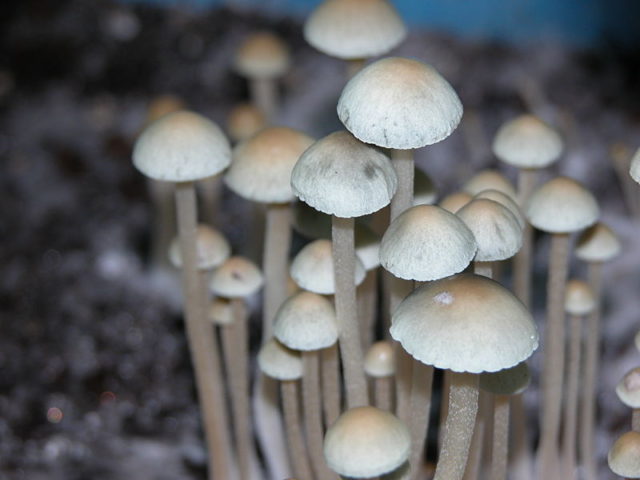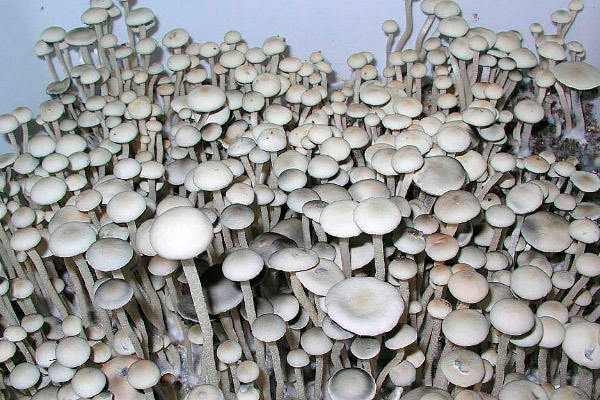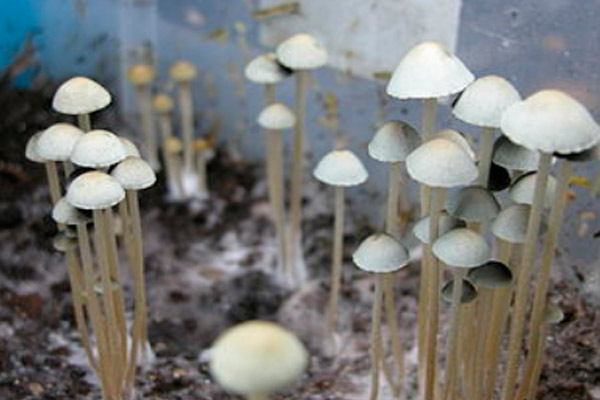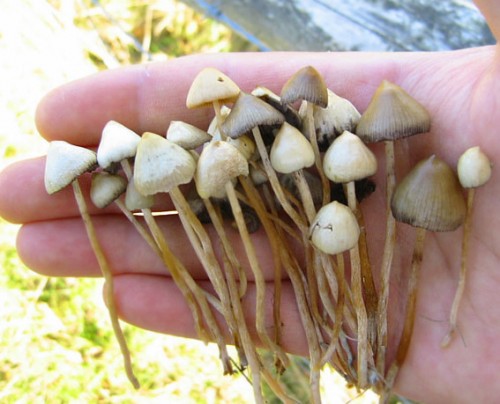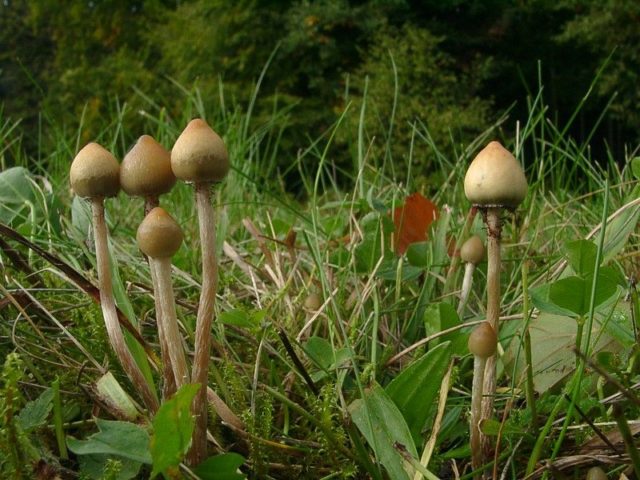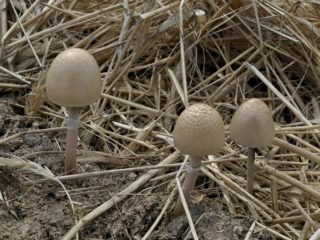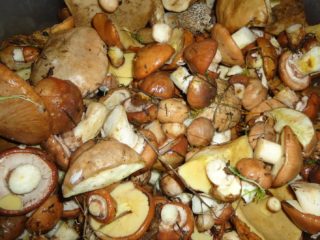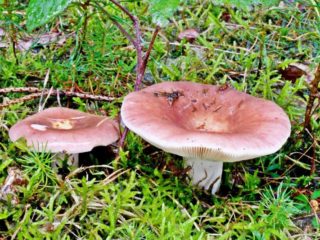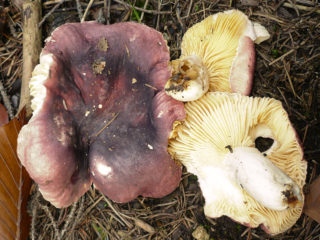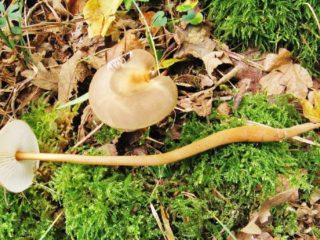Content
Paneolus blue is a mushroom that belongs to the hallucinogenic species. In order not to confuse it with edible representatives, it is necessary to carefully study the description and habitat.
What Paneolus blue looks like
Paneolus blue has many names that in one way or another reflect the appearance of the mushroom - Blue Dream, Hawaiian, Amanita blue, Copelandia blue, Copelandia abnormal.
Description of the cap
The distinctive features of the fruiting body are the shape and color of its upper part. In young specimens it is hemispherical, the edges are turned upward. As it grows, it takes on a bell-shaped, prostrate appearance and becomes wide with a convexity. The diameter is small - from 1.5 to 4 cm. The surface is dry, not rough. The color changes as it grows.At first the cap has a light brown tint, and maybe white. But over time it fades, becomes grayish, or turns yellow. If you break the mushroom, the flesh will quickly acquire a greenish or bluish color.
Description of the leg
Paneolus blue is distinguished by a rather long stalk, which is made in a cylindrical shape. The slender lower part of the mushroom can grow up to 12 cm in height and 4 cm in diameter. Moreover, it can be either straight or slightly curved, which depends on the level of humidity in the region and the age of the fruiting body.
The surface of the leg is smooth. The color is usually pale gray or whitish, but there are also specimens with pinkish or yellow underparts. When damaged, the leg also takes on a green or blue tint.
Where and how does it grow
Paneolus blue grows, as a rule, in places where the soil is fertilized with fresh manure. These are meadows and walking areas where not only livestock graze, but also wild ungulates live. Geographically, it is found in almost all regions of Russia, including Primorsky Krai and the Far East. The species also grows in Bolivia, the USA, Hawaii, India, Australia, Thailand, Mexico, the Philippines, Brazil and France.
The first harvest of blue paneolus appears in June, and the last mushrooms can be observed in early October. It is important to take into account that fruiting bodies can grow either in groups or individually.
Is the mushroom edible or not?
Paneolus blue is a hallucinogenic mushroom that contains serotonin, urea, psilocin and psilocybin.There is still debate about the edibility of the fruiting body. Some experts claim that the mushroom belongs to the category of conditionally edible. Other scientists, classifying it as inedible, are confident that blue paneolus is dangerous to human health and life, so it cannot be consumed in any form.
If the blue paneolus is accidentally or deliberately eaten, then a person may experience attacks of hallucination, and the victim’s state often borders on delusional. As a rule, he begins to perceive the situation in brighter colors, and his hearing becomes more acute. There may be aggression or depression, rapid changes in mood (crying abruptly turns into violent laughter and vice versa).
Doubles and their differences
Paneolus blue has many similar counterparts. All of them also grow in manure areas and have hallucinogenic properties. The main difference between the fly agaric in question is the flesh that changes color during damage. Other dung mushrooms also have a bell-shaped cap.
- Psilocybe semilanceolate - poisonous specimen. The upper part of the fruiting body reaches a diameter of 3 cm, the surface is smooth, the color is light beige. The leg is flexible and strong, has no border.
- Psilocybe papillary. The hat resembles a bell or cone, which reaches a diameter of 5-15 cm.The color is gray or olive, the surface is slippery. The lower part of the mushroom is curved and hollow. It is a poisonous species.
Conclusion
Paneolus blue is an inedible mushroom that can cause psychological disturbances. At the same time, it has a special appearance, which helps not to confuse it with other edible fruiting bodies.
